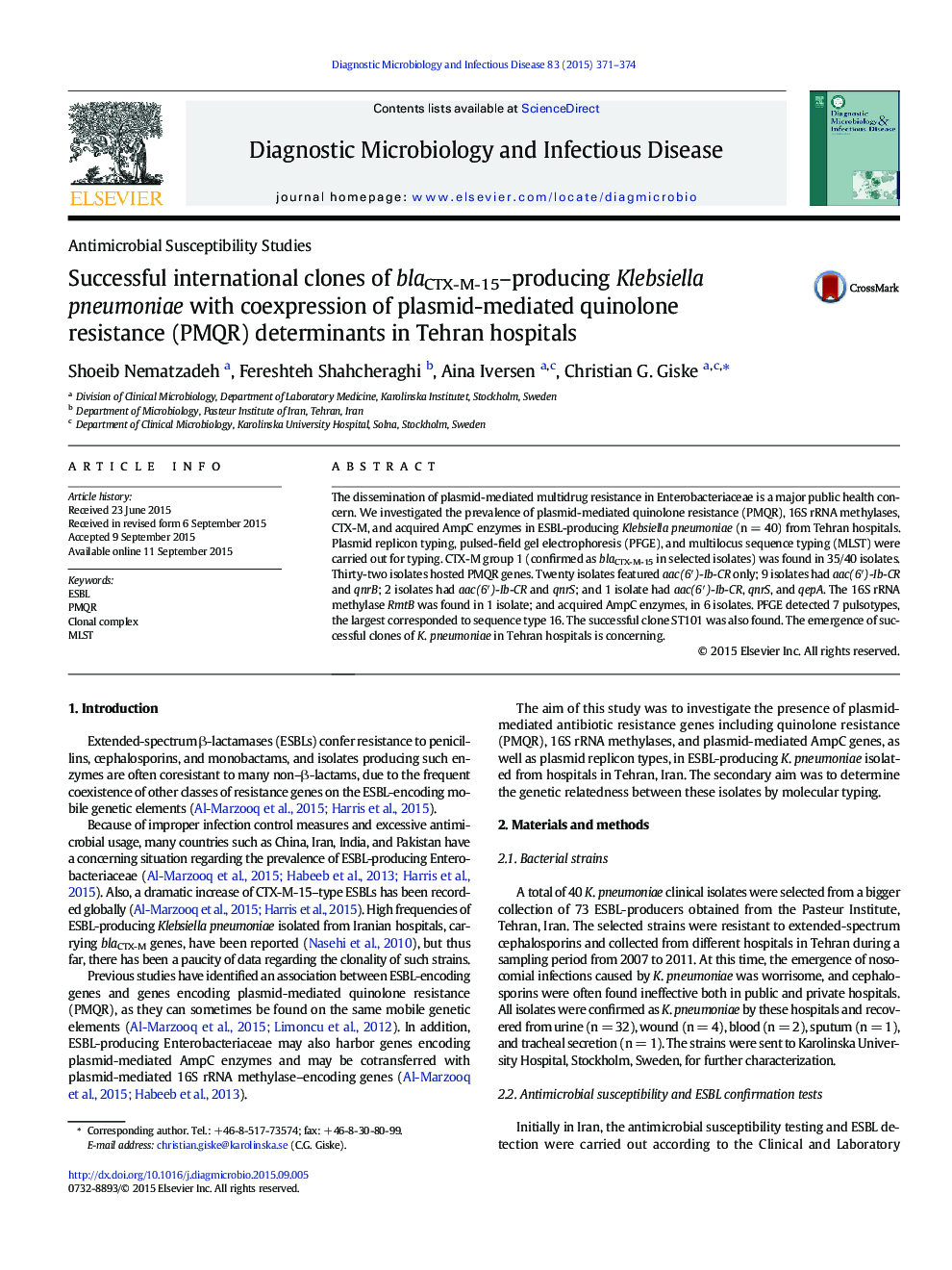| Article ID | Journal | Published Year | Pages | File Type |
|---|---|---|---|---|
| 3346886 | Diagnostic Microbiology and Infectious Disease | 2015 | 4 Pages |
•We characterize extended-spectrum β-lactamase–producing K. pneumoniae from Iran.•CTX-M was the dominating genotype, followed by SHV-ESBLs.•Other plasmid-encoded resistance genes were frequently found.•The successful clone sequence type 16 was described for the first time in Iran.•The pefloxacin disk was used for detection of fluoroquinolone resistance.
The dissemination of plasmid-mediated multidrug resistance in Enterobacteriaceae is a major public health concern. We investigated the prevalence of plasmid-mediated quinolone resistance (PMQR), 16S rRNA methylases, CTX-M, and acquired AmpC enzymes in ESBL-producing Klebsiella pneumoniae (n = 40) from Tehran hospitals. Plasmid replicon typing, pulsed-field gel electrophoresis (PFGE), and multilocus sequence typing (MLST) were carried out for typing. CTX-M group 1 (confirmed as blaCTX-M-15 in selected isolates) was found in 35/40 isolates. Thirty-two isolates hosted PMQR genes. Twenty isolates featured aac(6′)-Ib-CR only; 9 isolates had aac(6′)-Ib-CR and qnrB; 2 isolates had aac(6′)-Ib-CR and qnrS; and 1 isolate had aac(6′)-Ib-CR, qnrS, and qepA. The 16S rRNA methylase RmtB was found in 1 isolate; and acquired AmpC enzymes, in 6 isolates. PFGE detected 7 pulsotypes, the largest corresponded to sequence type 16. The successful clone ST101 was also found. The emergence of successful clones of K. pneumoniae in Tehran hospitals is concerning.
